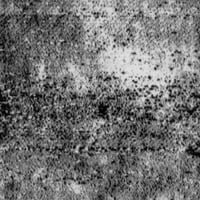The long reach of history
I haven’t scoured their online archives nor do I own the Complete DVD, but my all-time favorite New Yorker article is easily Ian “Sandy” Frazier’s “Invaders.” It begins the way many of my conversations do:
Recently, I’ve been buttonholing everybody I know and telling them about Hulagu. What happened was, a couple of years ago Osama bin Laden said (in one of his intermittent recorded messages to the world) that during the previous Gulf War Colin Powell and Dick Cheney had destroyed Baghdad worse than Hulagu of the Mongols. Bin Laden provided no further identification of Hulagu, probably assuming that none was needed. Of course, almost no one in America had any idea what he was talking about, so news stories helpfully added that Hulagu, a grandson of Genghis Khan, was a Mongol general who sacked Baghdad in the year 1258. Beyond that footnote, the press as a whole shrugged at bin Laden’s out-of-left-field comparison and moved on.
Frazier has a gift for condensed multidimensional connections. For instance, the Mongols’ army was so devastating and mobile because, coming from the steppes, they were magnificent on horseback and had used draft animals to carry around all their equipment:
Fuelled by grass, the Mongol empire could be described as solar-powered; it was an empire of the land. Later empires, such as the British, moved by ship and were wind-powered, empires of the sea. The American empire, if it is an empire, runs on oil and is an empire of the air. On the world’s largest landmass, Iraq is a main crossroads; most aspirants to empire eventually pass through there.
But in the territories they ruled, they weren’t barbarians at the gates: they had a terrific (and fast) postal service, they gave Marco Polo safe passage across Asia, tolerated the religions they encountered (if not always their adherents), and eventually largely converted to a pacifist Buddhism that pretty much spelled the end of the conquering empire.
Their legacy, however, both historical and biological, was secured:
Amassing large harems was an important occupation of the khans. Genghis Khan was said to have had five hundred wives and concubines. When the Mongols overran a place, their captains took some of the women and passed along the more beautiful ones to their superiors, who passed the more beautiful to their superiors, and so on all the way to the khan, who could choose among the pulchritude of a continent. Genghis Khan had scores of children, as did other khans and nobles descended from him for centuries in the Genghis Khanite line.
Recently, a geneticist at Oxford University, Dr. Chris Tyler-Smith, and geneticists from China and central Asia took blood samples from populations living in regions near the former Mongol empire, and they studied the Y chromosomes. These are useful in establishing lineage because Y chromosomes continue from father to son. Dr. Tyler-Smith and his colleagues found that an anomalously large number of the Y chromosomes carried a genetic signature indicating descent from a single common ancestor about a thousand years ago. The scientists theorized that the ancestor was Genghis Khan (or, more exactly, an eleventh-century ancestor of Genghis Khan). About eight per cent of all males in the region studied, or sixteen million men, possess this chromosome signature. That’s a half per cent of the world’s entire male population. It is possible, therefore, that more than thirty-two million people in the world today are descended from Genghis Khan.





Stay Connected